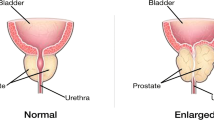Abstract
Prostate cancer is one of the most common cancers in men, and the cases of this disease is increasing. Histopathological examination of prostate cancer is one of the main procedures for prostate cancer detection. The structural changes of the cytoplasm, stroma, lumen and nucleus in the glandular tissue will indicate the presence of cancerous or non-cancerous areas in the histopathology of prostate cancer. Therefore, a framework was developed to automatically segment and classify glandular tissue into cytoplasm, stroma, lumen, and nucleus, which can reduce the complexity of prostate cancer detection. The images underwent image enhancement using histogram equalization (HE) and Contrast Limited Adaptive Histogram Equalization (CLAHE). Then, in segmentation phase, K-means clustering (KMC) and multi-level thresholding (MT) methods were implemented to segment the enhanced image into cytoplasm and stroma, lumen and nuclei regions. A total of 8 feature vectors are extracted from each segmented image. All these features were introduced into the classification system namely K nearest neighbor (KNN) and decision tree (DT). The overall results showed that the performance of KNN is better than DT with an accuracy of 86.67%, sensitivity and specificity are both 100% (the features of the KMC category). With the features of MT category, KNN achieved 84.44% in term of accuracy, 100% sensitivity and 96.67% specificity. Here, it can also be concluded that the features of the KMC category are more suitable for the classifiers. In addition, leave-one-out cross-validation has been implemented, which can improve the performance of the two classifiers.
Access this chapter
Tax calculation will be finalised at checkout
Purchases are for personal use only
Similar content being viewed by others
References
‘Cancer’. https://www.who.int/westernpacific/health-topics/cancer. Accessed 3 Mar 2020
‘458-malaysia-fact-sheets.pdf’ [Online]. Available: https://gco.iarc.fr/today/data/factsheets/populations/458-malaysia-fact-sheets.pdf. Accessed 02 Aug 2020
Kumar, R., Srivastava, R., Srivastava, S.: Detection and classification of cancer from microscopic biopsy images using clinically significant and biologically interpretable features. J. Med. Eng. 2015, 1–14 (2015)
Maheshan, M.S., Harish, B.S., Nagadarshan, N.: On the use of image enhancement technique towards robust sclera segmentation. Procedia Comput. Sci. 143, 466–473 (2018)
Singh, R.P., Dixit, M.: Histogram equalization: a strong technique for image enhancement. Int. J. Signal Process. Image Process. Pattern Recognit. 8(8), 345–352 (2015)
Gurav, S., Kulhalli, K.: Automatic detection of prostate cancer by computer aided diagnosis. Decis. Making 1, 2
Sajeena, T.A., Jereesh, A.S.: Automated cervical cancer detection through RGVF segmentation and SVM classification. In: 2015 International Conference on Computing and Network Communications (CoCoNet), pp. 663–669 (2015)
Öztürk, Ş, Akdemir, B.: Application of feature extraction and classification methods for histopathological image using GLCM, LBP, LBGLCM, GLRLM and SFTA. Procedia Comput. Sci. 132, 40–46 (2018)
Murtaza, G., Shuib, L., Mujtaba, G., Raza, G.: Breast cancer multiclassification through deep neural network and hierarchical classification approach. Multimed. Tools Appl. 79(21), 15481–15511 (2020)
Dervisevic, O.,Zunic, E., Donko, D., Buza, E.: Application of KNN and Decision Tree Classification Algorithms in the Prediction of Education Success from the Edu720 Platform, pp. 1–5 (2019)
Hussain, L., et al.: Prostate cancer detection using machine learning techniques by employing combination of features extracting strategies. Cancer Biomark. 21(2), 393–413 (2018)
Yoo, S., Gujrathi, I., Haider, M.A., Khalvati, F.: Prostate cancer detection using deep convolutional neural networks. Sci. Rep. 9(1), 1–10 (2019)
Author information
Authors and Affiliations
Corresponding author
Editor information
Editors and Affiliations
Rights and permissions
Copyright information
© 2022 The Author(s), under exclusive license to Springer Nature Singapore Pte Ltd.
About this paper
Cite this paper
Hun, C.C., Yazid, H., Safar, M.J.A., Ab Rahman, K.S. (2022). Comparison Between K-Nearest Neighbor (KNN) and Decision Tree (DT) Classifier for Glandular Components. In: Mahyuddin, N.M., Mat Noor, N.R., Mat Sakim, H.A. (eds) Proceedings of the 11th International Conference on Robotics, Vision, Signal Processing and Power Applications. Lecture Notes in Electrical Engineering, vol 829. Springer, Singapore. https://doi.org/10.1007/978-981-16-8129-5_46
Download citation
DOI: https://doi.org/10.1007/978-981-16-8129-5_46
Published:
Publisher Name: Springer, Singapore
Print ISBN: 978-981-16-8128-8
Online ISBN: 978-981-16-8129-5
eBook Packages: Intelligent Technologies and RoboticsIntelligent Technologies and Robotics (R0)




